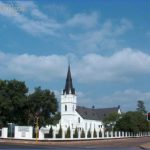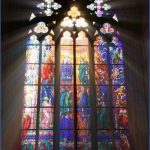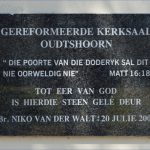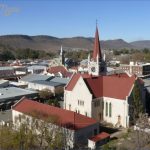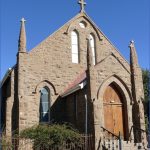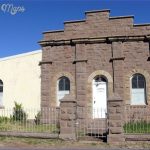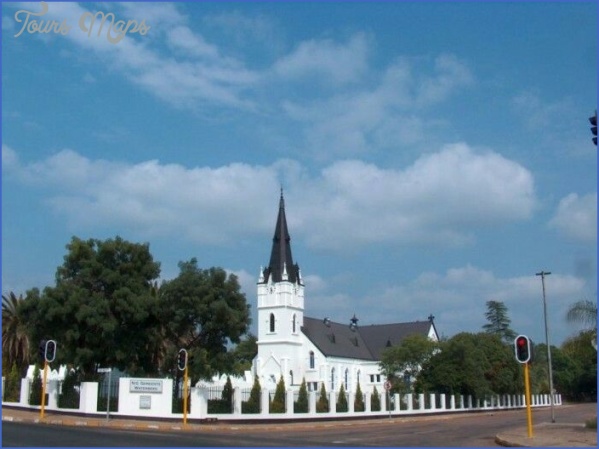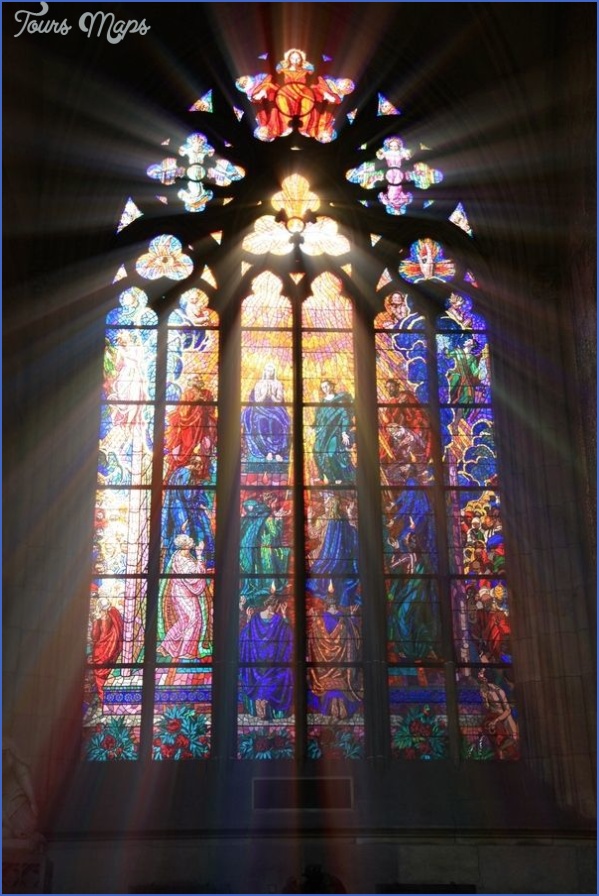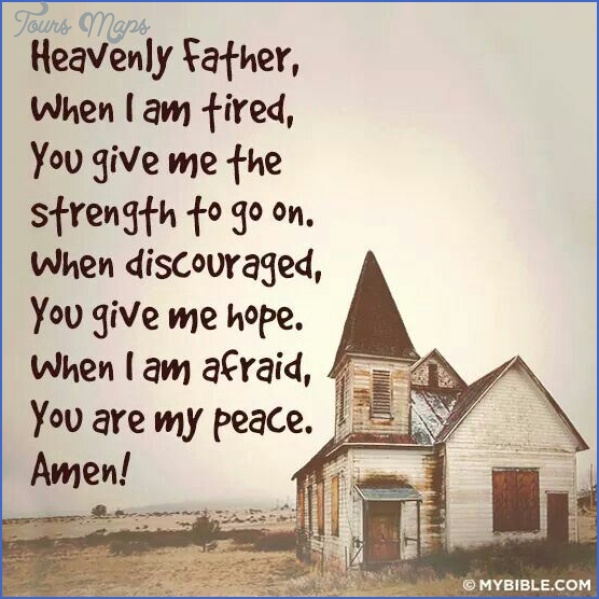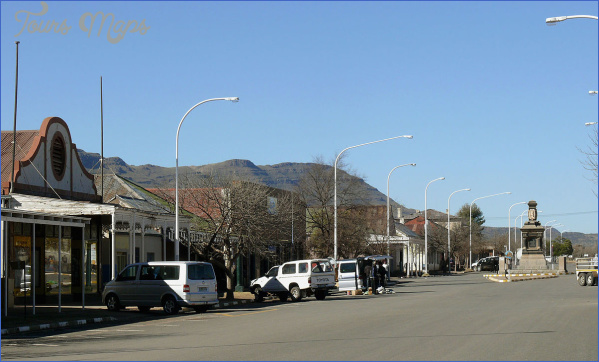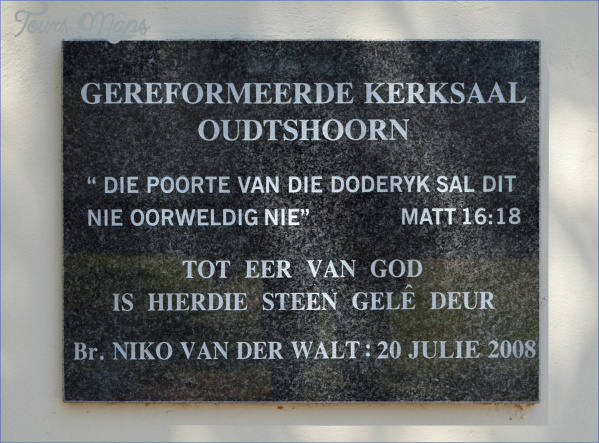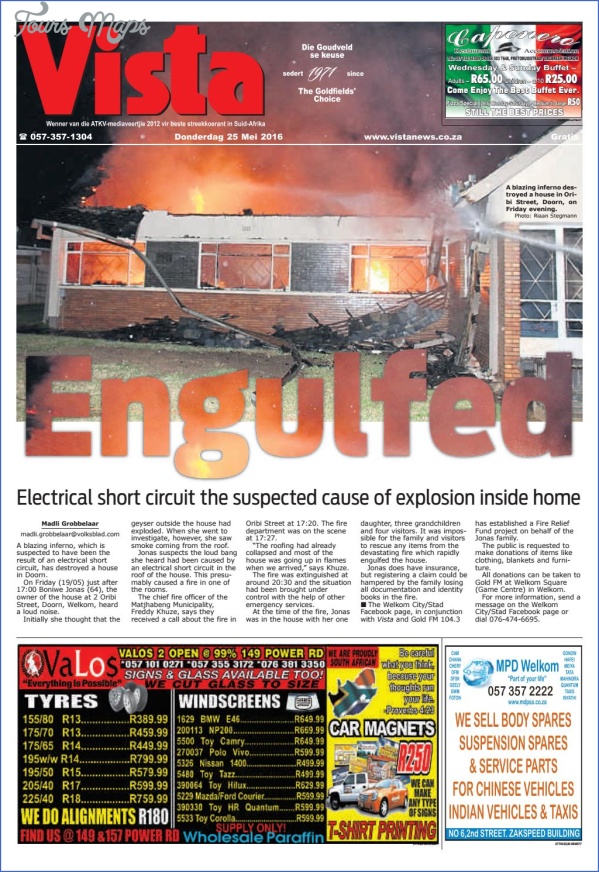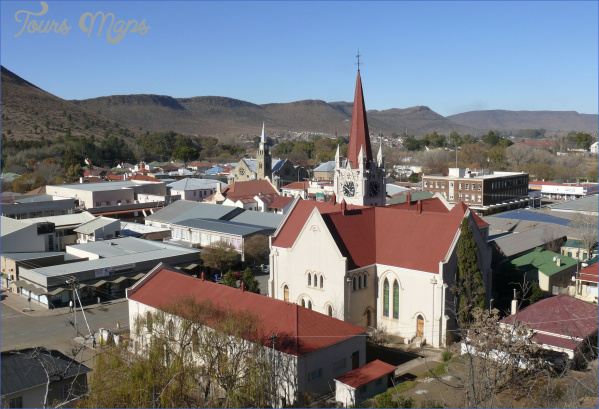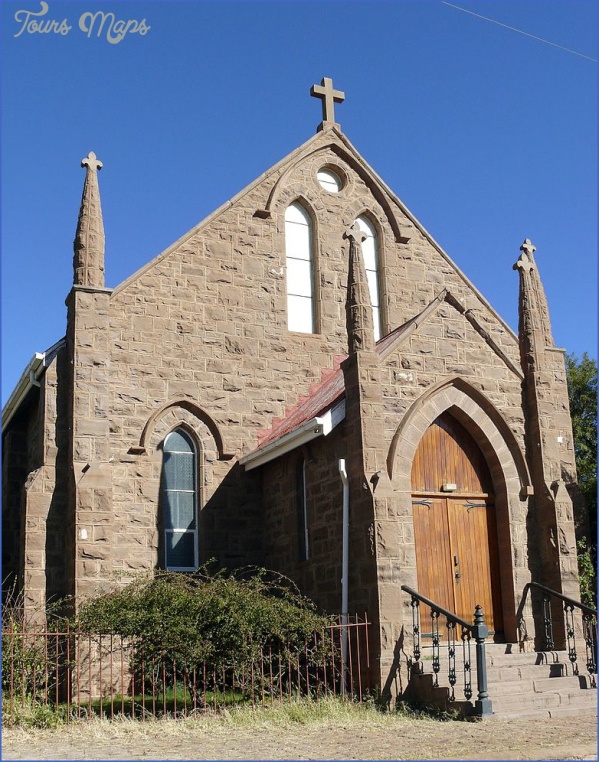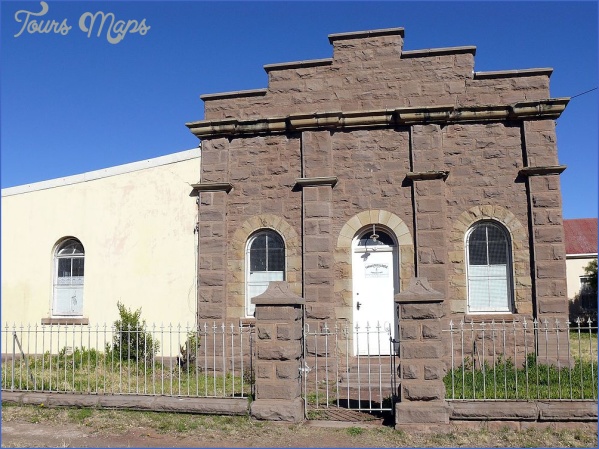The creed of the congregation requires a plain, unadorned interior in which to worship. Unwittingly, perhaps, this enhances the beautiful simplicity of the architectural forms.
I April 6th, 1952. The Gereformeerde Kerkgebou Hof Street is opening its new doors for the first time. Gerard Moerdyk is the architect. ‘Presies 300 jaar gelede,’ says the foreword in the event programme, ‘het onder God se beskikking Jan van Riebeeck die ware gereformeerde leer, soos vervat in the heilige Skrif en die Drie Formuliere van Enigheid, geplant hier aan die suidpunt van donker Afrika. Die ware, suiwere, gereformeerde godsdiens het in beoefening gekom hier waar woestheid, afgodery en heidense barbaredom geheers het.’ To mark this event, a cutout metal ornament of a ship, the Drommedaris, was fixed to the weather vane on the steeple to show the direction of the wind. The original Drommedaris brought Jan van Riebeeck, and thus the reformed teachings, to the Cape precisely 300 years earlier, on April 6th, 1652.
GEREFORMEERDE KERKGEBOU HOF STREET Photo Gallery
Who better, then, to express the role of the liturgy in the Reformed Church than architect Gerard Moerdyk (1890-1958)? Even today, he remains one of the best-known Afrikaans architects, but Hof Street is probably the least known of his churches. Moerdyk is known for two things: designing the Vbortrekker Monument, near Pretoria; and designing a series of churches whose plan breaks with the usual cruciform arrangement, to seat the congregation around the pulpit, as it does here at Hof Street. He looked to the Byzantine period for inspiration, finding that the centralized plan of the eastern Orthodox Christian tradition best suited the purposes of Dutch Calvinism – where the liturgy centres on the preaching of the doctrine and the sermon, and so didn’t require an apse for the sacramental ritual as in, say, the Roman Catholic Church. At Hof Street, the plan is effectively an amphitheatre whose focus, being the pulpit, emphasizes the preaching of the Word. And what makes it the perfect auditorium are the acoustics, the effectiveness of which in most of his ecclesiastical projects made Moerdyk something of a star.
Throughout his career, Moerdyk designed over 80 churches and, in his time, he was the unofficial ‘official’ architect of the Dutch Reformed Church. His distinctive style was hugely influential then and, while his work has ofen been copied, seldom has it been bettered. Today the Hof Street church still serves the community for which it was intended.
Moerdyk’s work is characterized by its mixing of historical elements, which might be Byzantine inspired, neoclassical or even Gothic. Here you can see the influence of, say, something like the old Roman Baths of Caracalla. The large semi-circles supporting the roof and housing the windows give a sense of monumentality to what is in fact a very small building. The interior The pulpit from above. It projects into the space so that the congregation has an unimpeded view of the preacher in it.
Maybe You Like Them Too
- Sanctuary Makanyane Safari Lodge SOUTH AFRICA
- Ruzizi Tented Lodge Akagera National Park, Rwanda
- Map of BOTSWANA – Mombo Camp BOTSWANA
- One & Only Nyungwe House RWANDA
- South Luangwa National Park Safari

